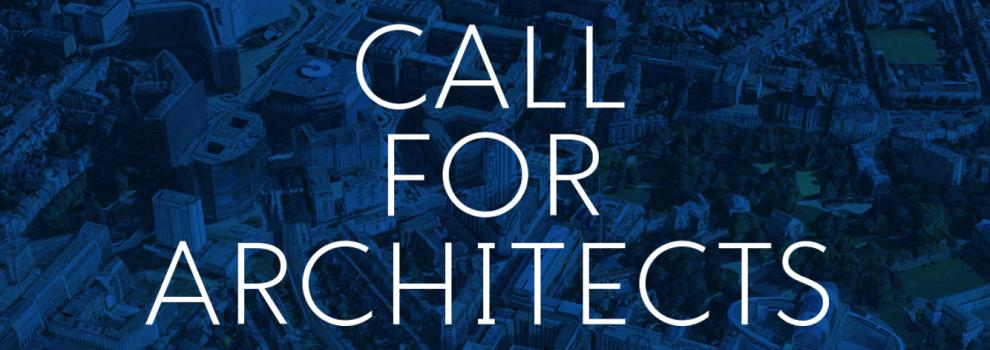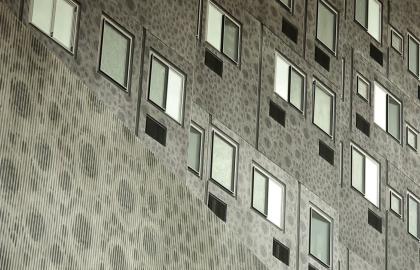
Architects in residence, programme Estonia
Architects in Residence Program – ESTONIA
WHAT?
To mark the Estonian Presidency of the Council of the European Union in the second half of 2017 and to the 100th birthday of the Republic of Estonia, in 2018, of the Estonian Declaration of Independence, the Estonian Centre of Architecture (ECA) will join the Centre for Fine Arts in Brussels (BOZAR) to set up an exchange program between architects from Belgium and Estonia. A format has been developed to allow long-term interchange and more intensive contact between the two architectural scenes. The ECA will choose young Estonian architects to participate in the project. Its choices will reflect a wide range of outlooks, from the no-nonsense to the highly engaged and quite speculative. The following practices have been approached: Salto, PART, Arhitekt Must, b210, Kaos.
This is the open call for Belgian architectural practices to participate in the Architects in Residence program and team up with practices in Estonia. Participating architects will host two Estonian architects (from one of the 5 emerging practices) for 4 to 5 days, engage in an intellectual discussion of the themes below and cover questions on research-design. The results of the collaboration will be presented in September 2017 at the Tallinn Architecture Biennale TAB 2017, in the form of an exhibition involving lectures and discussions. The results will also be exhibited and discussed in lectures at the Centre of Fine Arts in Brussels, in December 2017.
WHY?
The aim of the exchange program, and the collaboration between architectural practices in Estonia and Belgium, is to develop a joint exhibition for presentation in both countries. How do young architects and designers in Tallinn view the European capital? What specific expertise can they bring to bear on a series of urban challenges in Brussels, home of so many international institutions? How can architecture, urban design and landscaping address the symbolic deficit and how do they apply to Brussels, capital of Europe? In a series of workshops, Estonian and local architects will get the opportunity to work together to look for answers to these pressing questions through research-design.
The main project narrative is a quest to re-imagine the capital of Europe from 5 research perspectives:
1/ Symbolic deficit of the European presence in Brussels
The housing of the European institutions in a generic business district in the Leopold area communicates nothing about our European values or democracy. In the last renovation campaign the Berlaymont building, the only one to gradually attain emblematic value, was irrevocably mutilated. How might architectural, urban or landscape projects compensate for this symbolic deficit and lack of imagination? What programs, typologies and forms are implementable through a European project, in a relevant way? And where are they implementable?
2/ EU Valley
The public space between the main sites of the European institutions, the so-called Maelbeek valley, is currently fragmented. But, it is in this very area that a coherent and inspiring plan would help rebuild the image of the European project. How do we solve this problem through urban surgery?
3/ Security
Security measures are tightening their grip on the organization of the various institutions and access to them, and public space is frequently commandeered for specialist security buildings. Should we incorporate these security perimeters in the buildings wherever possible? Or simply allow their presence in the city? How do designers deal with this issue?
4/ E-government
Thanks to the advanced automation of administrative processes - a skill in which Estonia has played a leading role in recent years - we can expect to see a surplus of office space on the market in the decades to come. How will this impact on the European institutions and the district in which many of these administrative services are housed? How do architects and designers deal with this?
5/ Brussels as a mirror of Europe
Thanks to its demographic composition and geographical distribution across several districts of Brussels, the capital of Europe is often likened to a miniature version of the Europe of regions and Nation States. Many communities cohabit within a relatively small area and there is a wide diversity of cultures and languages. How does architecture and urbanism respond to this diversity?
HOW?
The Terms of the Residency:
• Belgian and Estonian practices must be present in Brussels in the week of 24 > 28 April 2017.
• Listing as a participating practice at the Tallinn Architecture Biennale (September, 2017) and at the exhibition and public debates at the Centre for Fine Arts (December, 2017).
• The organization will offer a return airline ticket, Brussels-Tallinn, and hotel expenses, for at least one architect per participating Belgian practice (September, 2017).
• Participating Belgian architects are expected to entertain the guest Estonian architects at their practices, but the organization will see to their accommodation.
• No participation fees or expenses may be claimed aside from those needed to present the work in progress at the Tallinn Architecture Biennale (September, 2017) and the exhibition at the Centre for Fine Arts (November-January, 2017) (to be discussed and approved by the ECA and BOZAR).
Guidelines:
• Open to all offices/practices/organizations on Belgian territory.
• Though English is the common language for the project, internal communication with the Centre for Fine Arts in Brussels may be in French or Dutch.
• Authors must provide all the materials needed to exhibit their works. The author's delegate is responsible for assembly and disassembly of the works.
• Some technical equipment may be provided by the organization.
• The author or delegate must be present for the start-up and shut-down of the works. Where this is not possible, simple instructions must be provided for this purpose.
• Full acceptance of these rules is implicit by virtue of participation in the competition.
Documentation required:
• Brief reasons for participation in the project and indication of preferred partner practice in Estonia (1 A4).
• Office portfolio.
Deadline:
March, 10, 2017 at 10am
by e-mail to francis.carpentier@bozar.be
WHO?
An expert jury will select the participating practices:
Aurore Boraczek (WBA), Kristiaan Borret (bMA), Chantal Dassonville (FWB Cellule Architecture), Marie-Cécile Guyaux (A+), Iwan Strauven (BOZAR)
Practical information
Dates
WHEN & WHERE?
Deadline Open Call
March, 10, 2017 at 10am
Timeframe for Workshop in Brussels
24-27 of April 2017 (arrival on the night of 23 April)
Exhibition rooms
Tallinn: Design and Architecture Gallery, Pärnu mnt 6, Tallinn, Estonia
Brussels: Centre for Fine Arts, Brussels: Residence Room - Council Room
Opening days and times, Brussels
From 23/11/2017 to 10/01/2018
Tuesday > Sunday 10:00 > 18:00
Thursday 10:00 > 21:00
Opening days and times, Tallinn
From 13/09/2017 to 30/09/2017
Monday > Saturday 12:00 > 18:00
The Tallinn Architecture Biennale also launches the TAB 2017 Vision Competition (deadline : 25 April).
Find more information here
PROJECT PARTNERS
Estonian Partners
• Partners: Estonian Centre of Architecture
• Supporting Partners: Estonian Centre of Architecture, Estonian Association of Architects (EAA), Estonian Academy of Arts, Estonian Ministry of Culture, Estonian Republic Centennial Celebration
Belgian Partners
• Centre for Fine Arts, Brussels (BOZAR)
• Brussels Bouwmeester Maître Architecte (bMa)
• Wallonie-Bruxelles Architectures (WBA)
• A+ Architecture in Belgium
Co-production
- Bozar
- Estonian Centre of Architecture
Support
- Estonian Association of Architects
- Estonian Academy of Arts
- Estonian Ministry of Culture
- Estonian Republic Centennial Celebration
- BMA
- WBA - Wallonie-Bruxelles Architectures
- Fédération Wallonie-Bruxelles- Cellule architecture
- A+ Architecture in Belgium



